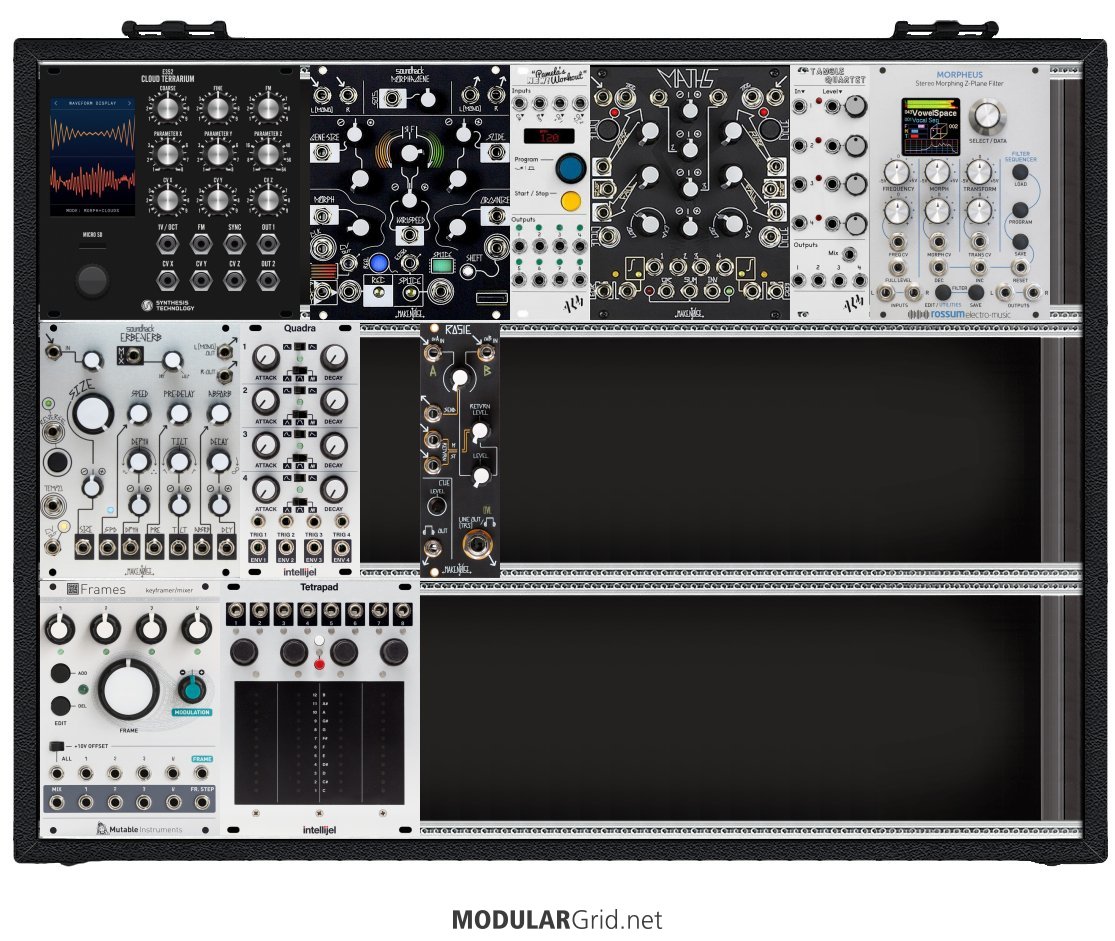Hmmm...well, from experience, this is sort of sparse for what you're intending. Yes, the Phonogene and Erbeverb fit well, the MATHS is pretty much a given, and the Morphing Terrarium is right. But in order to get into the "subtle, dark, and varied micro-movement" zone really well, plus have a lot of options for change-versus-time, you're going to need quite a bit more, especially in the way of control modifiers, to get that 'varied' thing and make it stick in listeners' heads.
I would suggest two ideas here before going too much further:
1) VCV Rack. Since you're apparently accustomed to software synths, but want to head into modular hardware, this is a good (and cheap, as it's free!) place to start, because it's actually BOTH. VCV Rack is a software version of Eurorack modular synth building, although unlike MG, it doesn't have the thousands on thousands of modules to screw around with. It does, however, have a huge base of built-in and third-party modules, some of which are models of some of the very same things you'll find here on MG. It works like you'd expect: you add virtual synth modules to a virtual cab, use virtual patchcabling to set up signal paths, and the whole thing behaves much as you'd expect a Eurorack system to work. I'm quite jazzed on this application and its community of module creators, because it gives you a very clear insight into how the MUCH more expensive hardware works before you drop buttloads of ca$h on it and then find out that, hey, this doesn't do what I need! It also allows you to learn the basics of all the different layers of programming, such as audio signals, CV signals, clock/gate/trig signals and the like, plus how to make a gain structure work in a modular, which is key to making sonically-effective patches.
2) A patchable synth. There's certainly reasons you see ARP 2600s and EML rigs in teaching labs, even to this day...and the biggest reason is that these synths, and others like them, let you get a feel for how signal flow works AND give you the option of working out your own patch architecture once you've figured out your way around and what (in general) sounds right to you. Now, those two synths there are spendy things; they're not made anymore, so examples are rather old AND very sought-after, so they command nosebleed-range prices. However, one synth from that early era still is around, is realtively cheap, and also makes for a good analog synthesis learning environment: the Korg MS-20, now in its 'mini' form. It, and its companion SQ-1 analog sequencer, can be had brand-new for cheap ($600-ish, max) and they offer an outstanding way to get used to synth hardware that both works in its factory configuration and which can be repatched to create different ones. The 'mini' also integrates really nicely into a computer-based environment since it offers both USB and MIDI interfacing.
Once you've dove headfirst into those, THEN start concocting modular ideas. And definitely keep looking at MG during all of this, studying other peoples' racks who're working in similar directions to glean some ideas about how you yourself can make use of the Eurorack environment when it's time to drop money.
Modular ain't cheap. And while these days its so much easier to get into (thanks, Dieter!!!), it's not necessarily a universal starting point, and can get you in way over your head at the start. But just as it was decades ago when I got sucked into this bizarre world of noisemaking, the best way to learn (with the excellent addition of VCV Rack) is the same ol' way I did. Get used to the world of patchcords and gearmadness the easier route FIRST...and then take that spendy flying leap! Good luck!


